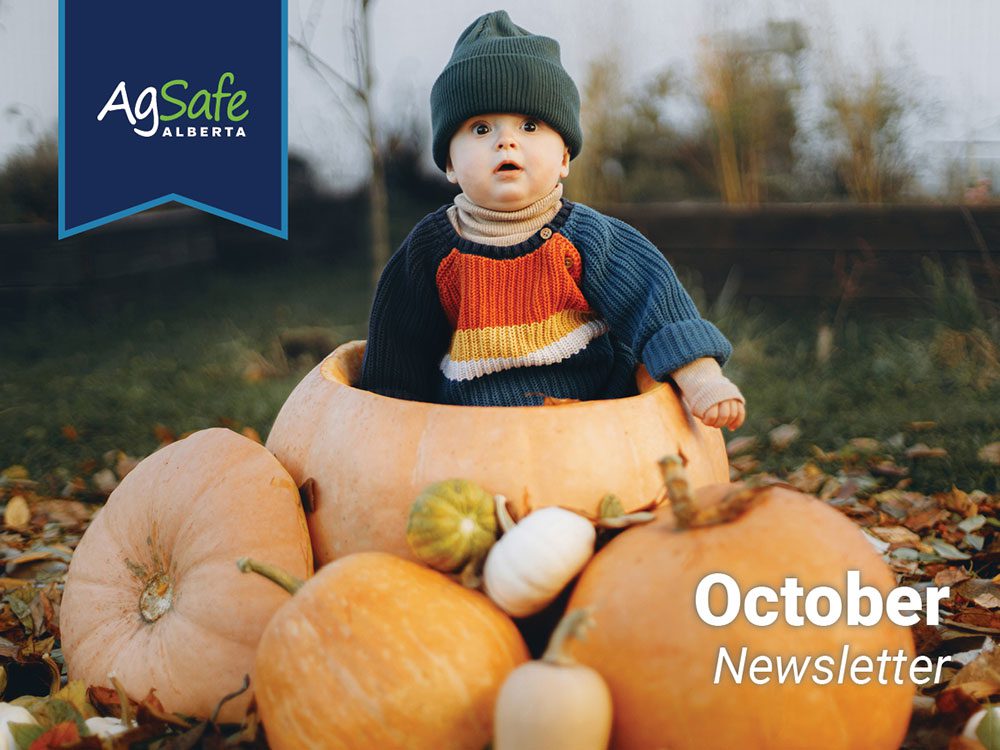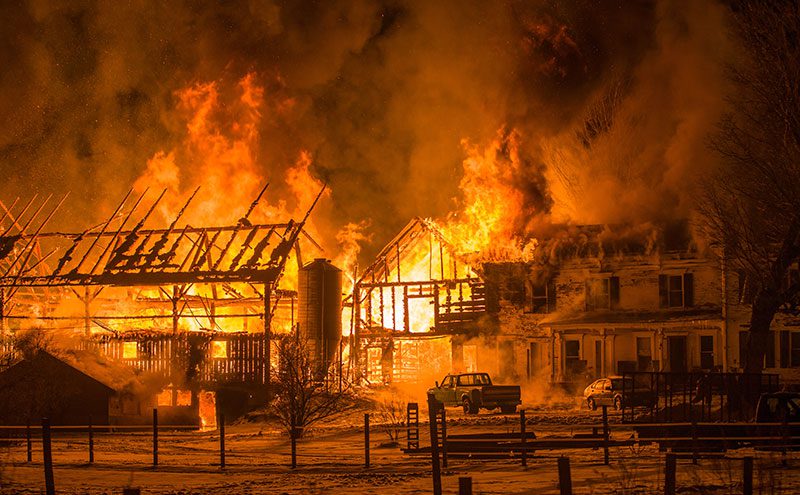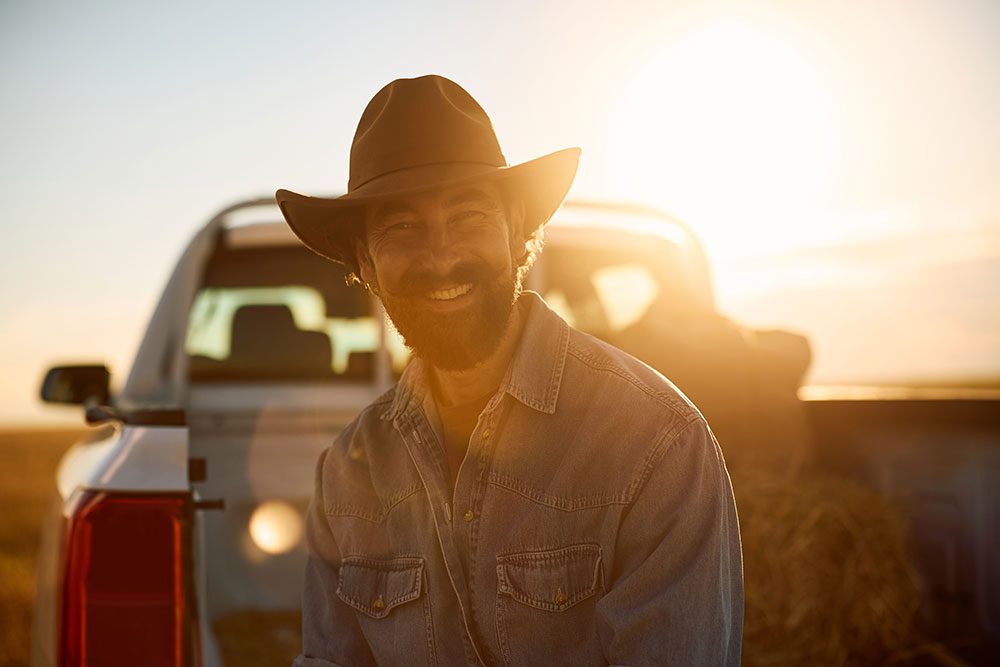

Barn Fires & The Impact

Barn fires can be one of the worst things to happen on a farm. They don’t just destroy buildings, they can also harm people, animals, equipment and your ability to keep the farm running. Here’s what you need to know:
What Can a Barn Fire Cost You?
The People You Care About: Someone may attempt to put out a fire or rescue animals, risking their life.
Building Damage: Fixing or rebuilding a barn can cost tens or even hundreds of thousands of dollars.
Animal Loss: If animals die in the fire, it’s not just heartbreaking, it’s also a big financial hit.
Lost Equipment and Feed: Tools, machines, hay and feed often burn too, adding to the cost.
Business Disruption: Without a barn, daily farm work may stop, which can affect your income and future contracts.
Legal Trouble: If safety checks (such as regular inspections) weren’t done and the fire was preventable, you could face fines or lawsuits.
On average, barn fires cost around $322,0001 in direct damage, but when you add in lost income, replacing animals and higher insurance premiums, the total can be much more.
Why Insurance Claims Get Denied
Insurance companies don’t always pay out after a barn fire. Here are reasons they might say no:
Suspected Arson: If they think the fire was set on purpose, even without proof, they might deny the claim.
Policy Issues: If you didn’t follow the rules in your policy (like keeping fire extinguishers or doing inspections), they may refuse to pay.
Missing Proof: If you don’t have records showing what was lost (like livestock numbers or equipment value) your claim could be rejected.
Pre-Existing Damage: If the barn was already in poor shape, the insurer might say the fire didn’t cause all the damage.
Excluded Causes: If the fire started from something not covered in your policy (like faulty wiring) they might deny it.
Why It’s Hard to Get Exact Numbers
There’s no public data showing how many barn fire claims are denied in Alberta. Insurance companies keep that information private, and Alberta doesn’t track barn fires like other provinces do.
Still, it’s estimated that 10–20% of property claims (including barn fires) may be denied. Because barn fires often involve big losses, insurers look at them closely, which can lead to more denials.
Real-Life Examples
In 2025, a family in Athabasca County had two barns burn down. They were shocked by the fire and the $4,500 bill for emergency response. They weren’t sure if their insurance covered outbuildings, which shows how easy it is to miss important policy details. Read more here: https://www.townandcountrytoday.com/athabasca-news/athabasca-farmer-asking-for-forgiveness-following-barn-fire-10588817
Barn fires often involve complex investigations due to severe damage, making it hard to determine the cause (e.g., a 2011 Taber hog barn fire’s cause was unidentifiable due to extensive damage). This uncertainty can lead to disputes and potential denials.
What You Can Do
Check Your Policy: Make sure your barns, animals and equipment are covered. Look for inspection requirements.
Keep Good Records: Write down what’s in your barn. How many animals, what equipment, and the barn’s condition.
Do Regular Inspections: Fires often start from electrical problems. Inspections help catch issues early and show insurers you’re being responsible.
Get Expert Help: If your claim is denied, consider hiring a fire investigator to prove what happened.
Talk to Your Insurer: Ask them what safety measures they expect and what’s covered in your policy.
Resources:
Download and share this information with your farm team: Barn Fires and the Impact
Alberta FarmSafe Plan Manual: Module 4 Inspections and Module 7 Emergency Preparedness & Management
AgSafe Alberta FarmSafe Plan Learning Program (free, online & self-paced program)
AgSafe Alberta FARMERS CARE Program
Fire Ext Placement Planning Form
1. Van de Vegte, J., et al. (2021, June). Electrical Systems in Barns.

The Importance of Regular Barn Inspections
Barns are a key part of farm life. They protect animals, store tools and equipment and keep feed safe. Because they’re so important, it’s up to the owner to make sure the barn is safe, well-maintained and meets insurance and safety rules.
Performing regular barn inspections isn’t just a good idea; it’s essential. Inspections help prevent fires, protect your finances, keep your insurance valid, and reduce risks. This guide explains why barn inspections matter, how they relate to insurance, what barn fires can cost and what it means for farmers and property owners.
Keeping Barns Safe
Barns can be risky places because of what’s inside: hay, dust, feed and other materials that can catch fire easily. Old wiring and overloaded circuits are also common causes of barn fires.
Performing regular barn inspections helps you:
- Find and fix electrical problems.
- Spot weak areas in the structure, such as damaged beams or roof issues.
- Clear out flammable materials like dust and debris.
- Make sure fire extinguishers are in the right places and ready to use.
- Improve airflow to prevent moisture and mould.
- Check for pests such as mice or insects that can damage the barn.
These simple checks can go a long way in preventing serious accidents and keeping people and animals safe.
Insurance and Barn Safety
As touched on in the previous article, insurance is an important way for farm owners to protect themselves from big losses. Most farm insurance policies require regular barn inspections to stay valid. Insurance companies routinely assess risk based on the age, condition and safety features of barns; they know that keeping barns in good shape helps prevent problems and shows that the owner is being responsible.
Many insurance policies say you must keep your barn and other buildings safe and well-maintained. If you don’t do inspections or keep records, you could face:
- Denied claims after a fire or other damage.
- Higher insurance costs because of increased risk.
- Losing your coverage altogether.
Doing regular inspections—and keeping written notes and photos—can help prove you’ve done your part. This can be very helpful if you ever need to make a claim.
How Inspections Help Prevent Problems
Regular barn inspections are one of the best ways to avoid costly damage. They help you fix issues early, replace old parts and add safety tools like smoke detectors, fire alarms and sprinklers.
- What to Check During an Inspection:
- Electrical wiring and outlets.
- Doors, windows, and emergency exits.
- Roof, beams, and foundation.
- Fire extinguishers and fire blankets.
- Ventilation to control dust and moisture.
- Safe storage of flammable items and chemicals.
- Lightning protection systems.
It’s a good idea to inspect your barn regularly, and especially after storms, renovations, or changes in how the barn is used. These checks help keep your barn safe and reduce the chance of incidents, injuries and other losses.
Keeping Good Records
When you inspect your barn, it’s important to write down what you find and what you fix. Take photos and keep receipts for any repairs or upgrades. These records show that you’re following safety rules and insurance requirements.
Having this proof can really help if you ever need to make an insurance claim. It shows you’ve been responsible and may help you get better coverage or lower premiums.
Resources:
Download and share this information with your farm team: Safety Brief: The Importance of Regular Barn Inspections
Alberta FarmSafe Plan Manual: Module 4 Inspections
AgSafe Alberta FarmSafe Plan Learning Program (free, online & self-paced program)
AgSafe Alberta FARMERS CARE Program

If you have farm-specific health and safety questions or require support relating to health and safety on your farm, please contact AgSafe Alberta at info@agsafeab.ca.
You may be eligible for onsite farm visits and up to 10 hours of advisor support at no cost!

New and Improved Farm Safety Resources
AgSafe Alberta has recently expanded and refreshed the template documents and sample forms available in our online FarmSafe Plan Workbook. These updates are designed to make it easier for Alberta farmers to build and maintain effective safety programs tailored to their operations.
To explore the latest additions, visit the Resources page on our website and look under the section titled AgSafe Alberta FarmSafe Plan Manual & Workbook. You’ll find a wide range of customizable tools ready to support your farm’s safety planning.
Getting Started with Customizable Templates
We know that starting a safety plan from scratch can feel overwhelming. That’s why we’ve created customizable template documents to help you take the first step with confidence.
Here’s how to use them:
- Find the template that fits your needs—whether it’s an emergency action plan, health and safety policy, or another key document.
- Download the file directly from the Resources page.
- Customize it to suit your farm. You can:
- Remove or edit table rows
- Update content to reflect how you do things
- Add new sections as needed
- Replace placeholder text and logos with your own
It’s that simple. These templates are designed to be flexible and user-friendly, so you can build a plan that works for your farm—without starting from a blank page.
Safer Farms, Stronger Futures
AgSafe Alberta’s Self-Paced Safety Training

Farming is a way of life in Alberta, and safety should be too. AgSafe Alberta is empowering farmers and ranchers through practical, self-paced online safety courses designed to make agricultural operations safer for everyone, from family farms to large-scale employers.
Our free and low-cost courses and learning programs include:
FarmSafe Plan Learning Program
This self-paced program was designed with both family farms and farm employers in mind. It teaches health and safety fundamentals and helps you apply this information in a way that meets your farm’s specific health and safety goals, whether that’s making the farm a safer place to live and work, meeting industry standards for sustainability or following Alberta’s occupational health and safety laws.
This program will benefit owner/operators, farm managers, colony leadership, agricultural health and safety practitioners, supervisors and anyone else who wants to better understand farm safety and how it applies to Alberta farms and ranches.
FARMERS CARE Program (Levels 1–4)
Unexpected things can happen to even the most experienced farmers.
That’s where the free FARMERS CARE program steps in. It’s a simple, effective and interactive tool to help you improve farm safety in practical ways, with no previous safety knowledge or experience required.
WHMIS, Pesticide, Veterinary Drug & Medicated Feed Awareness Course
Injuries and illnesses that result from exposure to hazardous products can be serious but they can also be prevented. By learning about the dangers of the products you use, you can take steps to protect yourself and others.
This course helps farmers and farm workers understand and protect themselves from the dangers related to hazardous products, pesticides, veterinary drugs and medicated feed. It also meets the requirements for general WHMIS training and follows the Canadian Centre for Occupational Health and Safety (CCOHS) WHMIS program.
Respiratory Protective Equipment Awareness Course
Respirators can help protect people from respiratory and atmospheric hazards, but only if the proper steps are taken first, and the right type of respirator is used by someone who is both trained and competent.
This course is designed to help anyone living or working on an agricultural operation better understand agricultural respiratory and atmospheric hazards, as well as respiratory protective equipment and its safe use.
Confined Space Awareness Course
Confined spaces and confined space incidents occur in all industries, including farming.
This course will teach you what restricted and confined spaces are, as well as help you learn how to identify these spaces on your farm and the hazards associated with them. It will also introduce you to some of the ways that the hazards of these spaces can be controlled before someone enters. The course is agriculture-specific, uses plain language wherever possible and provides practical examples relating to farming.
Effective Health & Safety Representative Awareness Training
Farms and ranches in Alberta with five to 19 regularly employed workers are required by occupational health and safety legislation to have a health and safety representative trained and in place.
This course meets the general training requirements for this position and will also benefit operations that may not be required to have a health and safety representative but recognize the benefits of having one in place.
Effective Health & Safety Committee Awareness Training
Farms and ranches in Alberta with 20 or more regularly employed workers are required by occupational health and safety legislation to have a health and safety committee trained and in place.
This course meets the general training requirements for committee members and will benefit operations that may not be required to have a health and safety committee but recognize the benefits of having one.
CONTACT US
